Innovation and Stagnation
The question of innovation (scientific, social, artistic, literary, philological and philosophical) and its opposite, stagnation, allows us to view the Renaissance in all its complexity, without reducing it to the one-dimensional image of a time when humanity achieved great, univocal progress. Masterpieces of human culture arose, in fact, from the ruins of war, sacking, and extreme poverty in the vast majority of the population. In the individual geographic itineraries we can see concrete examples of innovation in various fields of knowledge, but also the most tragic moments, when war and poverty thrust European civilization back into stagnation. And more often than not, these two stages did not occur in alternation, but were closely interwoven with each other. Great artistic and architectural progress can, in fact, be achieved expressly during times of crisis, and in response to them.
Taking into consideration innovation, stagnation and their mutual interaction in Renaissance times can be a good starting point for reflection on contemporary Europe, and on how to promote cultural and social progress that also contemplates the possibility of stagnation, to avoid it as far as possible. The ideal scope is the promotion of a new Renaissance that, being aware of the limitations of the historical Renaissance, can go on to surpass them.
Related itineraries
![]() Following Machiavelli’s footsteps
Following Machiavelli’s footsteps
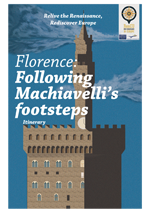
The Florentine itinerary "Following Machiavelli's footsteps" shows us how the transition from stagnation to innovation can take place, that is, how innovation can occur even at times of crisis.The biography of Machiavelli brings to light great literary and political innovations emerging from his personal condition of crisis, with his dismissal from his public responsibilities. The innovations linked to political crisis undoubtedly include Michelangelo's projects for fortifying the walls of Florence, originating expressly from the imminent need of military defence.
![]() The Alhambra and Granada Caroline: the dream of Emperor
The Alhambra and Granada Caroline: the dream of Emperor
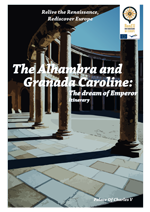
In the Alhambra itinerary we find many innovations of artistic and architectural nature, as exemplified by the utilization of Raphael's style in the Rome of 1520-30, and in the architectural style of Islamic origin. Other innovations, linked to military defence, or of poetic nature, such as the introduction of the Italian sonnet into Spain, were not lacking.
![]() Monastery of Serra do Pilar: a window on Europe
Monastery of Serra do Pilar: a window on Europe
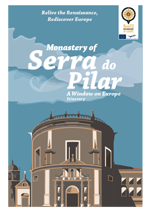
The dialectics between innovation and stagnation can be a useful guideline for following the Monastery of Serra do Pilar itinerary. The encounter with northern, Protestant Europe had led to major innovations in architecture; just as the science and humanism that dominated the thought of the times led to a significant increase in new inventions. At the same time, however, tensions existed between, the new humanism and secular attitude on the one hand, and the Judeo-Christian heredity on the other. Although the Catholic reaction against the Reformation and the prohibition against translating the Bible into the vernacular were undoubtedly a phenomenon of stagnation, they also had the merit of favouring better theological and moral preparation among the clergy.
![]() Renaissance route in Malopolska
Renaissance route in Malopolska
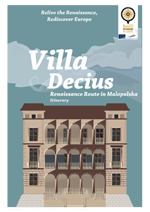
In the Polish itinerary of Malopolska we can admire the major cultural, artistic and architectural innovations brought by the Italian artists in the retinue of Bona Sforza: just consider the two variants of the model central domed chapel developed by Bartolomeo Berrecci for the Sigismund Chapel and the Bishop Tomicki Chapel (both in the Kraków Cathedral). For over a century the two became models for this type of structures; however, precisely for this reason, their application could be perceived in the long run as an indication of a certain stagnation.
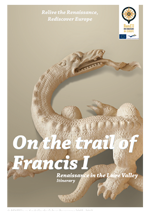
The Loire Valley under the reign of King Francis I was at the centre of notable cultural development. Francis I, a great admirer of Italian art and architecture, strongly encouraged the formation of a new Renaissance style in the Loire Valley. The Italian artists brought to the various chateaux in the Valley their own talents and competences, which however took a specific form there - as exemplified by French gardens which, unlike the Italian ones, are hierarchically subordinate to the chateau. The novelty of the chateaux and their surroundings can also be seen in the coexistence of nostalgia for the age of chivalry with the new Renaissance ideals of harmony.